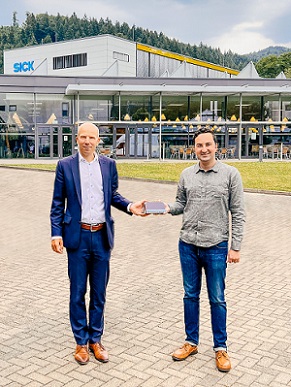Photonics HandbookThe News Wire
SICK, Aeva Partner on Industrial Lidar
Sensing perception system developer Aeva has partnered with SICK AG, a provider of industrial sensing solutions and cameras, in a multiyear collaboration to bring Aeva’s frequency-modulated continuous-wave (FMCW) 4D lidar to a variety of industrial sensing applications, including long-range sensing, beginning with Aeva’s Aeries II 4D lidar-on-chip solution.
Aeva’s FMCW 4D lidar technology provides high dynamic range performance to perceive low and high reflectivity objects within the same measurement without edge effects, a joint press release announcing the agreement said. The technology is also reportedly immune to blooming and ghosting from retroflectors, meaning automated machines using Aeva’s 4D lidar will have clear perception when highly reflective objects such as safety vests, cones, and tape are in the field of view of the sensor.

Niels Syassen (left), member of the executive board at SICK, and Soroush Salehian, co-founder and CEO at Aeva. The companies are collaborating on 4D lidar for industrial sensing applications. Courtesy of SICK AG.
Aeva began shipping Aeries II to strategic customers in the quarter ending June 30, 2022.
/Buyers_Guide/SICK_AG/c13546
/Buyers_Guide/Aeva/c33163